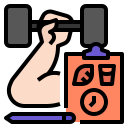Recovery, Sleep, and Overtraining Signals
A scorching burn can be misleading. Quality markers include stable technique, controlled breathing, and repeatable performance across sets. Rate sessions by execution rather than exhaustion. You’ll progress faster and avoid niggling injuries that keep you sidelined unexpectedly.
Recovery, Sleep, and Overtraining Signals
Muscle and connective tissue adapt between sessions, not during them. Schedule at least one to two lighter days weekly. Walk, mobilize, and sleep well. Paradoxically, rest makes next efforts better. What’s your favorite active recovery routine? Drop ideas to inspire others.
Recovery, Sleep, and Overtraining Signals
Five hours and caffeine won’t outpace biology. Aim for seven to nine hours with a consistent bedtime, darker room, and screen wind-down. One reader swapped late-night scrolling for stretching and noticed instant strength jumps. Try it, then tell us how you felt.






